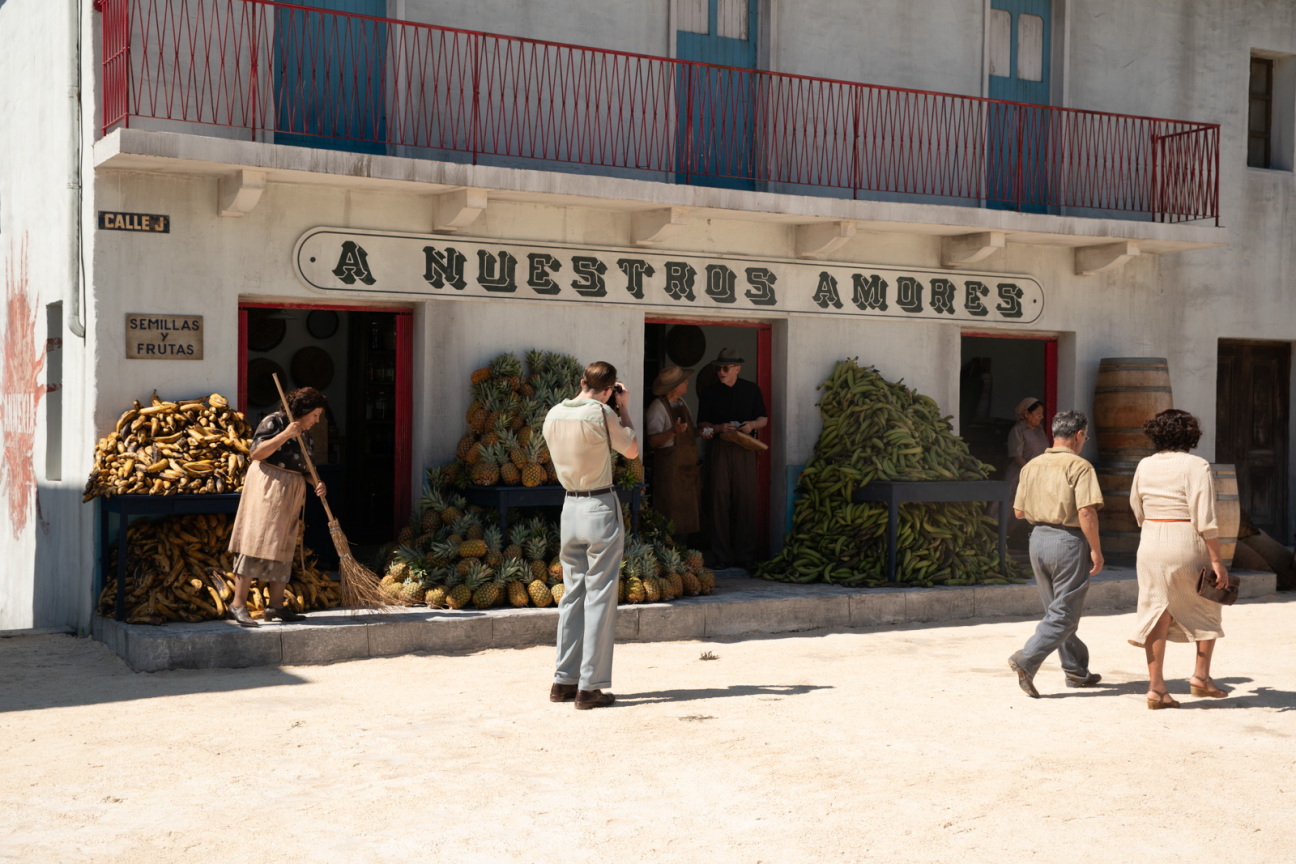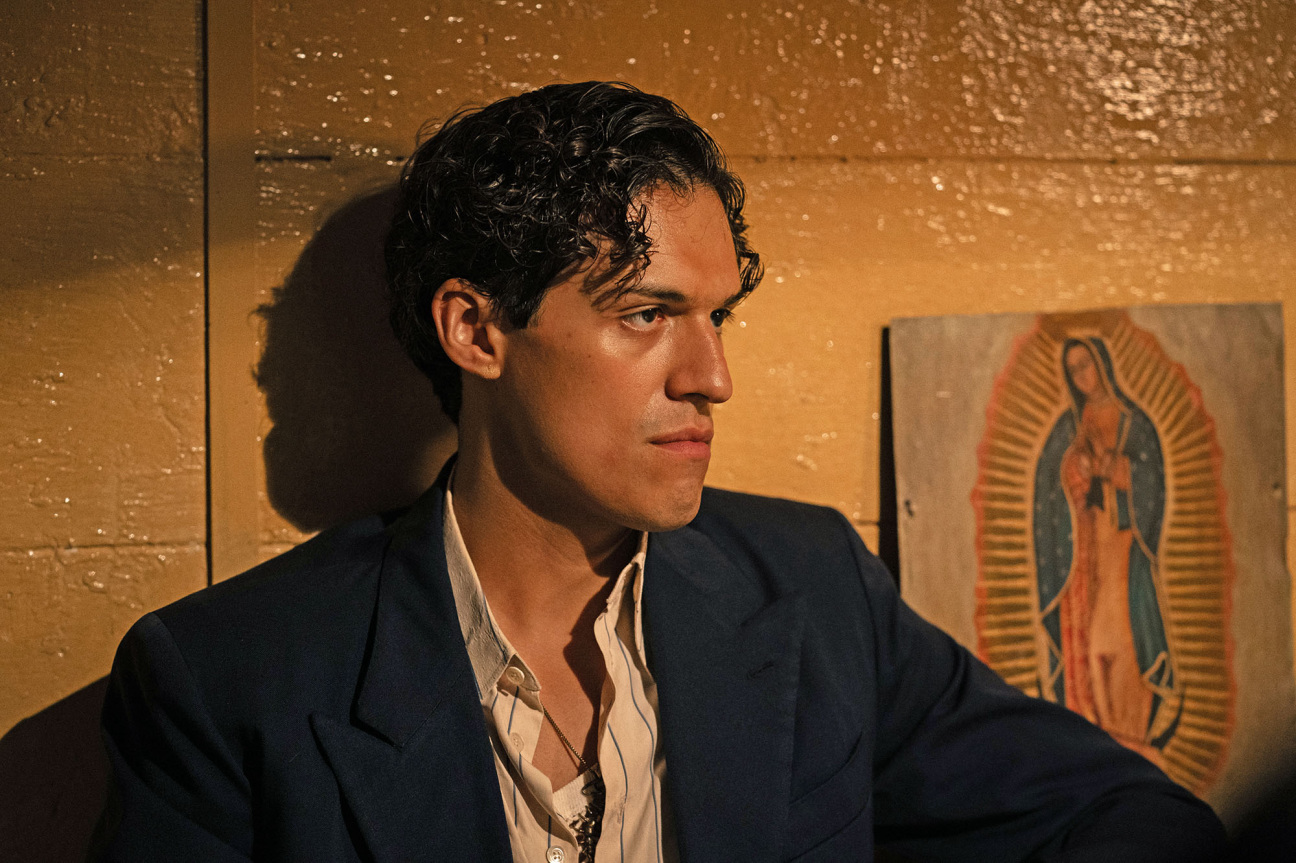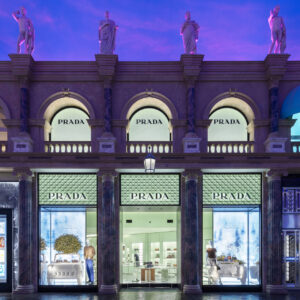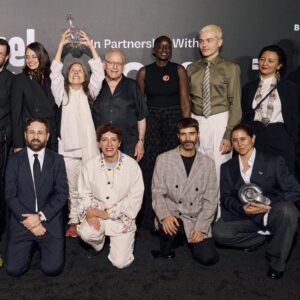Daniel Craig wears a white suit for most of Queer, tainted nearly brown with sweat and grime by the new film’s bitter end. “It’s like heroin,” costume designer Jonathan Anderson says, likening the pale fabric’s increasingly burnt hue to the character’s debilitating vice.
Queer—the latest from director Luca Guadagnino, and based on William S. Burroughs’s novella of the same name—is a far cry from the actor’s most glamorous roles. Viewers used to seeing Craig in finely tailored tuxedos and playing uppercutting villains will here find him on his knees, either from the humiliation of romantic obsession or effects of withdrawal. In Mexico City, Craig’s Lee is an American expat whose affections land on Eugene Allerton, a young U.S. Navy serviceman played by breakout actor Drew Starkey (best known until now for his role on Netflix's Outer Banks series).
The film is this year’s second collaboration between Guadagnino, Loewe and J.W. Anderson Creative Director Anderson, and screenwriter Justin Kuritzkes, who began work on the project before wrapping April’s steamy tennis sensation Challengers. Starkly different in tone and subject matter, the project is perhaps Guadagnino’s most impressionistic yet, the result of a teenage infatuation with Burroughs's novella and rife with hazy trips and yearning gazes.
Though the soiled vintage pieces employed here by Anderson are less likely to induce a fashion craze, as Challengers's tenniscore did this summer, the project is further evidence of the collaborators' singular style. It’s quickly becoming a staple of the box office, press circuit, and fashion month, where Guadagnino and his stable of actors regularly sit front row at Anderson’s shows.
Ahead of the film’s release, Anderson took CULTURED inside the pair's influential and increasingly prolific relationship.

CULTURED: How did Luca Guadagnino first convey the characters in Queer to you, or how he envisioned them?
Jonathan Anderson: Luca works in such an incredible way because he builds a group of people for each film. He's not a micromanager; he's like, “Here is the script, here is what I envision, here's the set,” and then he wants you to kind of propulse into it. I really love that because I feel like I do that myself in my own job. I hate micromanaging the situation. I want people to own what they do. So, when we were going through it, me and Luca did all the fittings together. It was like this process of experimentation. Sometimes we would do multiple fittings for a character and it would change as we would start shooting. It was quite freeing.
CULTURED: You were looking at period photography for this. Did that instantly come to you or were you going into it for ideas?
Anderson: I created all these research folders for Luca, these binders of visuals broken into artists of a time, or artists from previous times, and current conceptual artists, and then Luca had his folders and we kind of merged everything. George Platt Lynes was a huge influence for me. He was one of the greatest photographers of the 20th century and you wouldn't have had contemporaries like Mapplethorpe and people like Hujar without the moment of Lynes, which for me was this idea of transcendent queer culture within different time periods. Or even, for example, with the British painter Glyn Philpot, there was a softness in what he [depicted] in terms of clothing that I found really beautiful.

CULTURED: Can you tell me about where the idea for this white suit came from? It's such a focal point and really breaks down.
Anderson: When I was doing the research on Burroughs when he was younger, the time when the book is set, he was wearing these sort of industrialized suits that were kind of anti-fitting. They were so burned out that they had a life of their own. He had these subtleties, which I really liked. He would undo the top button in a lot of imagery that I had found, and I thought the idea of the white linen suit, or the white nylon nylon mix, for me was something where you go in the beginning of the film from an optic white through to the darkness at the end of the film. It's like a degradation of color as the film goes on. It was something that would yellow as we would go through the process, nearly like the idea of heroin.
CULTURED: It's effective because when you first see him come on, you're like, “It's Daniel Craig in a dapper white suit.” You're unexpecting of what his character will become.
Anderson: Daniel is so part of the pop-cultural viewpoint. For me, it was like, "How do you take this idea of the suit and kind of skew it so that it goes from being about the body consciousness of a suit, or the armor of the suit, to something where the carcass underneath is being held together by this ill-fitting suit?" There's an undoneness to Burroughs or to Lee, who Daniel plays, where you feel like the garments will smell like the man, ultimately.
CULTURED: And this is something that you had sourced. Drew Starkey said you had him in 1950s underwear—you pulled a lot of things. How did you go about sort of finding them?
Anderson: Because of the book, you don't know what period of time you're in, or what is real, what is not real, what is a trip, what is not a trip. When I was looking at the set design and what Luca was envisioning for the film, I really wanted to become obsessive within the nature of that period as a kind of anchor to allow for freedom within the rest of the thing. As long as there was a platform of classicism within that period—everything is period, the point of view, the underwear is original—it then leaves you thinking what time zone are you in? It's hard to pinpoint the decade ultimately.

CULTURED: How did you go about crafting this look for Drew? He's such a masculine ideal. How do you picture what that looks like physically?
Anderson: When I met Drew, I brought this series of suits I had found, very beautiful suits from the ’50s where you don't have waistbands on them. I felt like this was going to become his thing—it was gonna be his, like, tick. It was gonna be how he held a jacket. I loved, when I was giving the garments to Drew, that he was able to take it to another dimension. How he would fold a jacket over the thing, there was a kind of care to these things that ultimately have to last a lifetime.
He's so [put] together, but when you look closer, there is the hole in the top, or the seam is slightly going. These things are kind of being looked after, but at the same time, there is only this tight wardrobe. For both characters, I wanted to use the efficiency of repetition ultimately, because I feel like there is something real in that. Sometimes I find in films, if the look changes too much, you lose the iconography of the character.
And Drew just had this boyish elegance, you know what I mean? As a face, he is so poetic in the film because he has this ability, as an actor, to create intimacy and distance in such a beautiful way.
CULTURED: Coming right off of Challengers into this very distinct project, did it feel like you were carrying over from one into the next with Luca? How has your partnership evolved?
Anderson: We work on projects together that we feel are right, that are going to challenge us and different things. They're completely different projects, but what I think is nice is it kind of works in the way that I work in fashion. I can do one show and then you go to the next because you cannot reminisce over the same thing. That's what I love about these films. I love them both equally because they are opening my mind to different aspects of myself.
With Luca, it's just instinctive. We're very dear friends. He's someone I call every day, someone who I really trust, someone I care about, and someone who I take advice from. We both want to help one another.

CULTURED: Are you sending him sneak peeks of Loewe looks?
Anderson: Always. I think Luca always sees the collection before anyone else does.
CULTURED: You two are building quite a stable of actors. At the Loewe shows, it's Luca and all of the Luca children from his films. There’s a bit of a pipeline between these two.
Anderson: I want to support Luca in what he does and vice versa. It's about being part of a family of people where I think there's an authenticity to it. The idea of having actors or singers and musicians… if I have someone at the show, I have to have some sort of connection. Having a stranger in a room is very difficult if I don't understand what they do. And I feel like it's forced; it's sort of pay-for-play. I don't like that. I want people to represent what I represent or challenge me in things that I don't know.
CULTURED: I know it's early, but are you anticipating further collaborations? I read somewhere that you said Luca is the only person you’d do costume design for.
Anderson: We've got a couple of things we're working on that may come to fruition, but let's see. I will never forget the moment of filming this. Some things creatively change you, and I think this did change me. It opened my eyes to how cinema is made and to the beauty and craft of cinema. Working with people who are in different fields from you, it keeps you grounded. It keeps you realizing that anything is possible. That's what is amazing about Luca: Anything is possible.










 in your life?
in your life?

